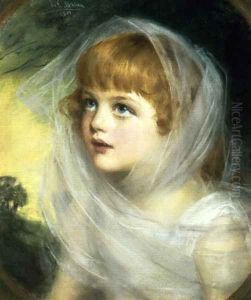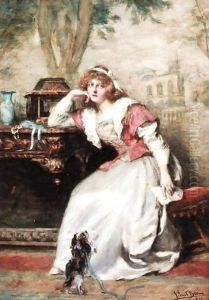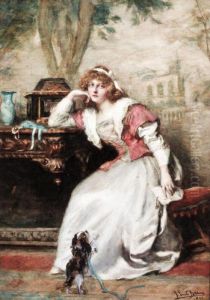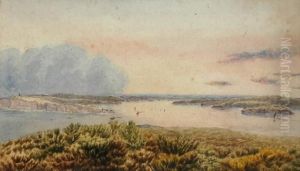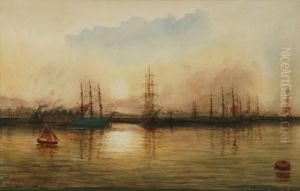John Ernest Breun Paintings
John Ernest Breun, more commonly known as John Ernest, was an American artist born on November 12, 1920, in Milwaukee, Wisconsin. He was a pioneering figure in the Op Art movement, which is short for 'Optical Art,' a style that uses optical illusions to create engaging visual experiences. Ernest's work was characterized by its precise geometric forms and the interactive play of color and shape to affect the viewer's perception.
Ernest's artistic journey began at an early age, but it wasn't until he served in World War II that his vision for his work began to take shape. After the war, he used his G.I. Bill benefits to study in Europe, where he encountered the works of the Old Masters and contemporary artists alike. This exposure to a variety of artistic styles and historical periods informed his approach to art, but it was the modernist movements that seemed to have the greatest influence on his work.
Throughout the 1950s and 1960s, Ernest developed his unique style within the Op Art movement, which gained significant popularity during that time. Unlike some of his contemporaries who focused on painting, Ernest was more interested in the structural and three-dimensional possibilities of art. He often worked with metals and other materials to create sculptures with surfaces designed to interact with light and the movement of the viewer, thus creating a dynamic visual experience.
John Ernest was an important figure in the British constructivist movement, and he was one of the founding members of the Systems Group in the 1960s, which was a collective of artists interested in creating art based on a set of predetermined rules or systems. His work was widely exhibited during his career, including shows at the Museum of Modern Art in New York and the Institute of Contemporary Arts in London.
Ernest's contributions to art were not limited to his own practice; he also held teaching positions, passing on his knowledge to younger generations of artists. He believed strongly in the ability of art to transcend cultural and linguistic boundaries, making it an ideal platform for universal communication.
John Ernest passed away on May 6, 1992, but his legacy lives on through his artwork and the impact he had on the Op Art movement and constructivist practices. His works continue to be studied and appreciated for their innovative approach to visual perception and their exploration of the relationship between art, science, and technology.
